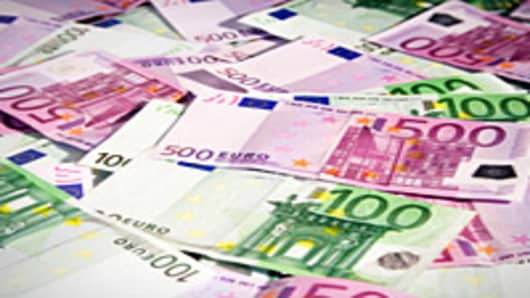A plan to boost the firepower of the euro zone’s €440 billion ($585.5 billion) rescue fund could deliver as little as half what the bloc’s leaders had hoped for because of a sharp deterioration in market conditions over the past month, according to several senior euro zone government officials.
European leaders hailed a scheme to offer insurance on losses for investors buying troubled euro zone bonds as a means of leveraging the €250 billion spare capacity of the rescue fund four or five fold, to more than €1,000 billion.
But the dramatic spike in borrowing costs for Italy since the summit is likely to force the European Financial Stability Facility to sweeten the deal offered to investors, which will limit the number of bonds the insurance would cover.
Klaus Regling, head of the EFSF, earlier this month said that overcoming investor concerns with improved guarantees would mean the fund was likely to have only three to four times the firepower—an admission that underlined the challenge European leaders face in steadying sovereign debt markets.
But three senior euro zone officials said even this lower target may be difficult to reach, and expect the eventual firepower to be between two and three times the remaining buying capacity of the fund. “It is falling well short of its billing,” said one. Concerns over leverage will be a key item on the agenda of euro zone finance ministers meeting on Tuesday.
These officials are also pessimistic about the prospects of a second source of leverage, a co-investment vehicle designed to entice investors from emerging markets. One said the idea was given a such a tepid reception by China and Brazil that is may struggle to amass funds.
No concrete pledges to the fund will be announced by euro zone finance ministers, but it remains an active option for the EFSF. One euro zone official argued pledges could only be expected to come once the exact terms of the vehicle’s use were settled.
Leveraging the EFSF’s dwindling resources was the main element of a grand plan unveiled in October to create “firewalls” that stop fallout from Greece spreading to European banks and its largest economies, particularly Italy.
But the rise in Italian and Spanish borrowing costs to painfully high levels has underscored the severity of the crisis and reopened the debate over more radical alternatives to boost the clout of the rescue fund. An added worry is the risk of a possible French downgrade, which would significantly sap the strength of the EFSF, as the fund is built on guarantees from “AAA” rated countries.
Alternative options include fresh guarantees or injections of money, the use of the EFSF as a bank, or steps to bring forward the European Stability Mechanism, Europe’s permanent bailout fund, so that it runs alongside the EFSF instead of immediately replacing it.
Given the highly volatile markets and uncertainty over future European Central Bank interventions, it is almost impossible to predict the value of bonds the EFSF will eventually be able to insure.
The EFSF is still confident that investors will be lured by a guarantee against a loss of between 20 to 30 percent, and officials point out that it is on track in setting out the terms of the different options to leverage resources.


